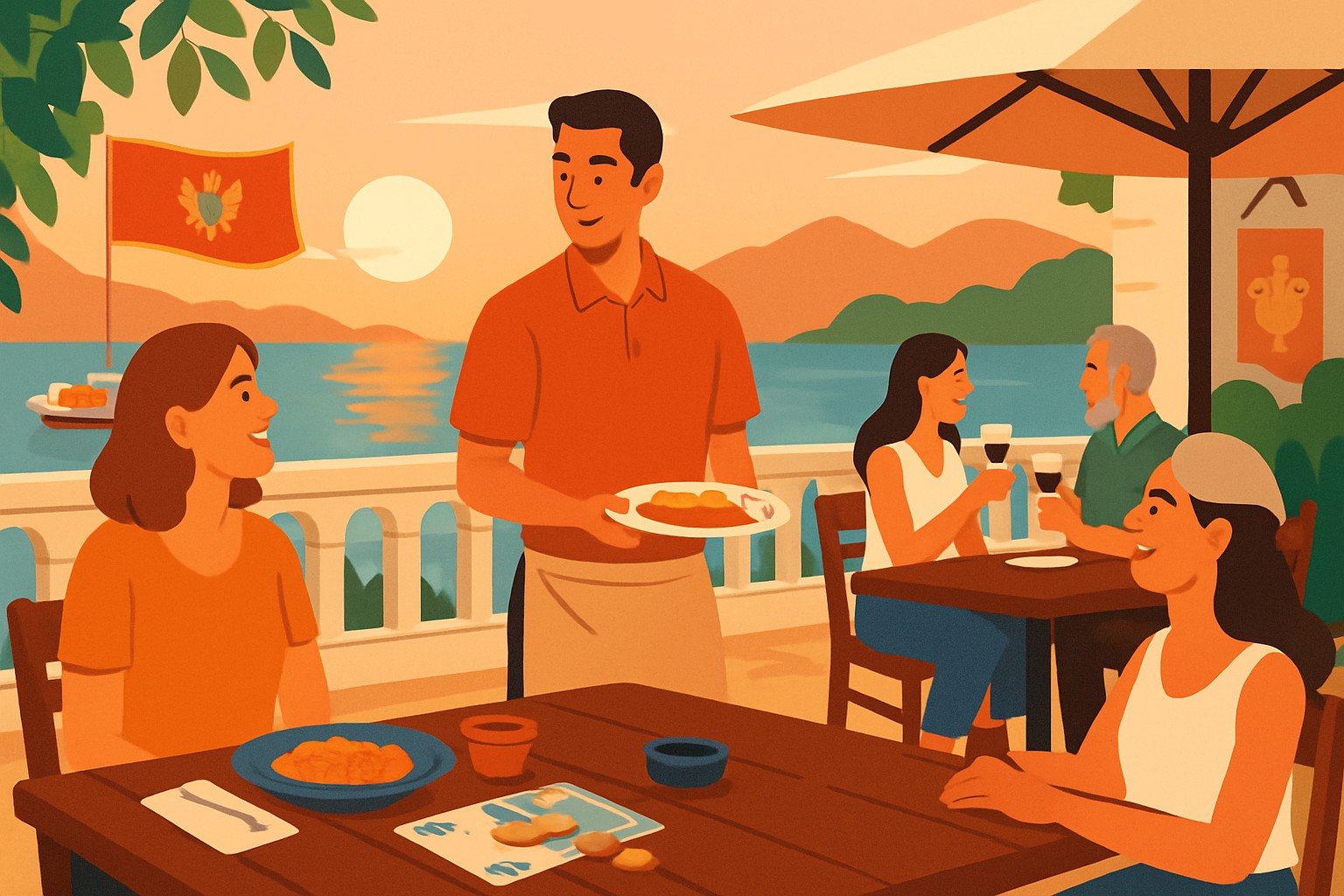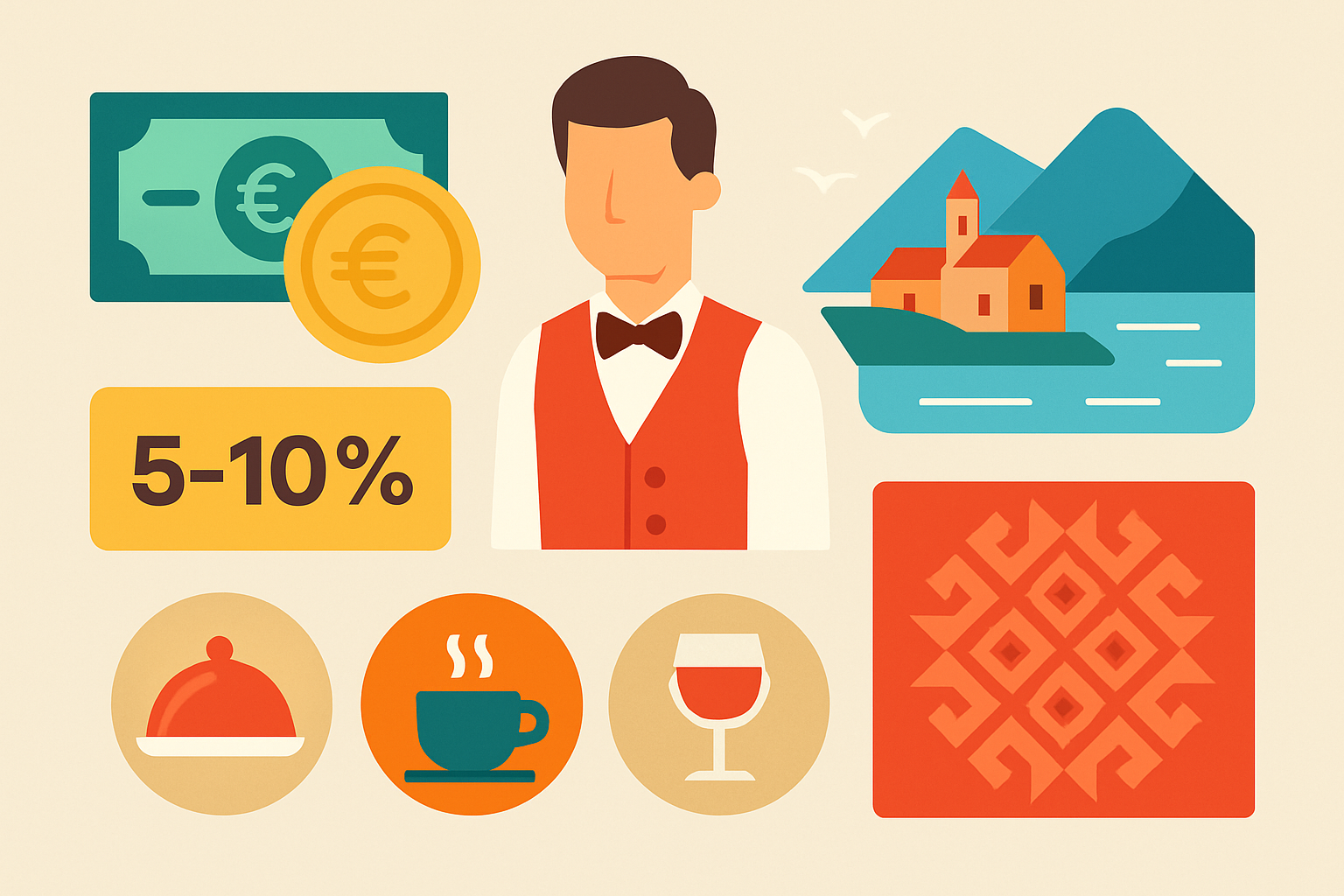Tipping In Montenegro - Rules Restaurants and Cafes Follow

Tipping in Montenegro can be a minefield for travelers, especially when entering a country with customs different from what you are used to. In Montenegro, it pays to learn the tipping etiquette in restaurants and cafes so you can avoid awkwardness and show your appreciation correctly. This article explores the tipping culture in Montenegro, highlighting common practices, cultural significance, and unspoken rules that restaurants and cafes follow.
A Friendly, No-Nonsense Guide to Tipping in Montenegro
In Montenegro tipping is generally seen as a nice way to say thanks for good service rather than an obligation. Unlike places where tipping feels almost mandatory, here it’s more of a bonus that helps top up the modest wages of service workers without being set in stone. This tradition reflects the country’s warm culture of hospitality and respect. It is quite different from the US or Western Europe where a tip can often make up a bigger part of a worker’s paycheck.
- Tipping is a voluntary way to show that you’re genuinely pleased with the service you received.
- In restaurants, tips usually range from about 5% to 10%.
- Cultural expectations around tipping tend to be relaxed and locals often just round up the bill without much thought.
- Many service workers depend on tips to make ends meet because their base wages can be low.
- Tipping isn’t only for restaurants; it’s also common to show appreciation to taxi drivers and hotel staff.
Typical Tipping Customs in Restaurants You Should Know Before Dropping a Tip
In Montenegro tipping usually comes into play once you’ve finished your meal and the bill lands on the table. At more laid-back casual spots it’s common for individuals to just round up the total or toss in a few coins—nothing too fancy. When you’re dining at a nicer upscale restaurant though, leaving around 5% to 10% as a tip is the norm. Typically the tip finds its way to the waiter or waitress rather than the kitchen crew.
- It’s usually best to leave a tip after you get the final bill. This is typically while you’re still sitting at the table soaking it all in.
- Tipping generally ranges from 5% to 10% depending on how well the service hits the mark.
- In more casual spots people often just round up to a nice tidy amount which is easy and hassle-free.
- Tips go straight to the waiting staff and customers typically aren’t expected to share with the kitchen crew who stay behind the scenes.
- If the service misses the boat it’s totally fine to leave no tip at all without stirring up any bad vibes.
Do Service Charges Usually Show Up on the Bill?
In Montenegro you’ll generally find that restaurant bills don’t come with a mandatory service charge attached. The VAT (Value Added Tax) is conveniently baked right into the menu prices, so what you see is pretty much what you pay—though that doesn’t cover tipping. Since service charges are a rare sight, leaving a tip usually ends up being the main way to show your appreciation to the waitstaff who’ve served you.
What You Really Should Know About Tipping in Cafes and Bars
Tipping in Montenegrin cafes and bars is usually pretty laid-back, nowhere near as formal as what you’d find in restaurants. Most people just leave a few coins or round up the bill without making a big deal out of it. Since many coffee spots and bars run on a quick-service or self-service model, tipping is definitely appreciated but hardly ever expected.
- It’s common to leave a bit of spare change or just round up the bill when you’re paying at a cafe. This is a no-brainer for many.
- Tipping bartenders is something you see a lot though it’s totally optional. Usually a few coins will do or around 5-10 percent if you’re at a fancier spot where cocktails won’t come cheap.
- Cafes that run on self-service or fast-food style usually don’t expect any tips so you can skip that without guilt.
- When it comes to table service in coffee shops dropping a small tip is a nice way to say thanks even if it’s just a modest gesture.
- The vibe around tipping here leans casual. People tip mostly when they’re genuinely happy not because they feel they have to.
Rules and Responsibilities That Restaurants and Cafes Usually Follow (Because Keeping Things Running Smoothly Takes a Bit of Effort)
Restaurants and cafes in Montenegro tend to handle tipping in a laid-back informal way. Some spots pool tips and share them among all the service crew—waiters, bussers and sometimes even the kitchen staff get a slice of the pie. Other places hand tips straight to the waiter who took care of your table with no fuss. How clearly tips are divvied up depends on the venue. Bigger establishments usually have more structure in place.
- Tips either get tossed into a communal pot shared among the staff or kept by individual servers depending on the joint.
- There aren’t any hard-and-fast legal rules about how tips must be split so you’ll find various approaches out there.
- Some places share their tipping policies behind the scenes to keep things fair and avoid awkwardness.
- Staff generally understand that tips make up a significant part of their paycheck because it is a big deal to them.
- Smaller laid-back cafes usually keep tipping setups straightforward compared to the complex arrangements in fancier larger restaurants.
How Businesses Usually Give Customers the Heads-Up About Tipping
Most Montenegrin restaurants and cafes tend to signal that tipping is welcome in subtle, unobtrusive ways. This often pops up as small notes on menus or receipts mentioning an optional tip, or the staff dropping gentle hints in a way that’s hardly pushy. Since tipping is customary but definitely not mandatory, many places leave the final call completely in the guest’s hands.
Practical Tips for Travelers on Tipping in Montenegro (Because Nobody Likes Dipping into Awkward Moments)
For smooth tipping in Montenegro, it’s a good idea to keep some small bills and loose euro change handy—makes life a lot easier when the moment comes. Always tip based on the quality of service, but don’t forget to skim your bill first to see if a service charge has sneakily crept in already. When you’re unsure, quietly observing how the locals do it or politely asking a friendly local can save you from any awkward tipping faux pas.
- Keep a few small euro notes and coins tucked away for tipping.
- Match your tip to how friendly and attentive the service feels because a bit of warmth deserves some gratitude.
- Always take a good look at your bill to check if a service charge is already included.
- Quietly ask a local about the usual tipping customs.
- Be mindful of cultural expectations since tipping too much or skipping it without a reason can sometimes raise eyebrows.
Common Misunderstandings About Tipping in Montenegro (And What You Really Need to Know)
Many travelers often assume tipping in Montenegro is a must or that leaving a hefty tip will totally wow the staff. Some go as far as thinking tips completely substitute wages or that skipping the tip is downright rude every single time. The system is pretty laid-back and really hinges on how happy you are with the service. Credit card tips don’t always fly, so it’s a good idea to keep some cash on hand just in case.
- Tipping is not always a must and usually comes down to the customer's call.
- Tips are meant to boost what are often pretty modest wages, not to replace them altogether.
- Leaving out a tip is not necessarily rude, especially if the service didn’t quite hit the mark.
- In lots of places, cash is king when it comes to tips—credit card tips are often off the table.
- Throwing down a huge tip can sometimes cause more head-scratching than gratitude.

Visual infographic summarizing tipping dos and don’ts in Montenegro restaurants and cafes




